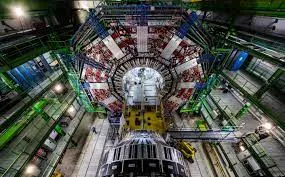The first observation of the "X" particle that could change the known history of the origin of the universe
In the next year or two, the team of researchers plans to collect more data that will help clarify the structure of this particle
Scientists make first detection of exotic “X” particles in quark-gluon plasma
An international research team, led by scientists from the Massachusetts Institute of Technology in the United States of America (MIT), was able to detect one of the mysterious particles - called "X" particles - for the first time, which could contribute to advancing our understanding of the universe during the first very small parts of the universe. The first second of its history.
According to the new study , published in Physical Review Letters, the team used artificial intelligence and machine learning techniques to examine more than 13 billion collisions between lead ions at the Large Hadron Collider (LHC) of the European Organization for Nuclear Research (CERN). CERN).
In collisions of this type, particles are accelerated to approach the speed of light, then collide with each other, and the resulting particles are monitored, as each of these collisions produces tens of thousands of charged particles.
The researchers trained machine-learning algorithms to pick out the characteristic decay patterns of “X” particles among this vast amount of data. Those particles disintegrated very quickly into daughter particles that scattered away, but the effect of this was detectable.
According to a press release issued by the Massachusetts Institute of Technology on January 21, in the middle of the resulting particle soup, which is usually ultra-dense and high-energy, the researchers were able to deduce the presence of about 100 X particles, specifically one of its types, known as "X3872". (X 3872).
Anatomy of particle X
The existence of (X3872) was first assumed in 2003 due to a slight misalignment in the results of the Japanese "Belle" particle collider, which hits high-energy electrons and positrons together.
At the time, a team of researchers suggested that this new particle would become more apparent in the "quark-gluon plasma" produced by other colliders such as the Large Hadron Collider.
The natural matter we know is made of atoms, which in turn are made up of electrons orbiting around a nucleus made up of protons and neutrons. According to the Standard Model of Particle Physics, each proton and neutron are made up of 3 other smaller particles called quarks.
But in the case of the "X" particle, scientists assume that it is of a completely different nature from ordinary matter, as it consists of 4 quarks, and one team suggests that it is 4 quarks that are aligned with each other in some way, and another team suggests that it consists of two mesons, which are particles that form From Quarkin, in a physical model that is not yet sufficiently understood.
This type of particle arose during the first very minute parts of the first second after the Big Bang 13.8 billion years ago, so studying these particles and understanding their composition and the reason for their formation helps fundamentally change the history of the universe as we know it.
In the next year or two, the researchers from this team plan to collect more data that will help clarify the structure of this particle.
Tags:
cambridge science
electrical sciences
genomic sciences
geosciences
life science
live science
neuroscience
science
science magazine
space science
strait of science



